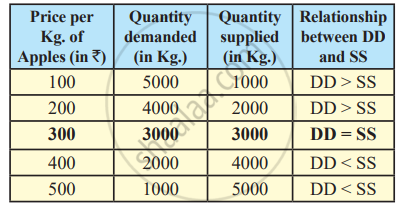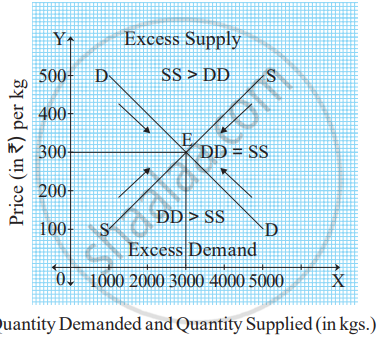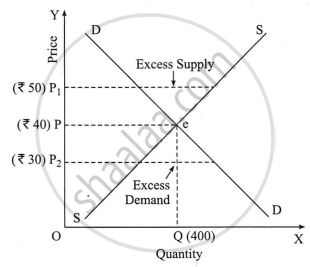Topics
Introduction to Micro and Macro Economics
Micro Economics
Macro Economics
Utility Analysis
- Utility
- Types of Utility
- Concepts of Utility
- Relationship Between Total Utility and Marginal Utility
- Law of Diminishing Marginal Utility
- Assumptions of Diminishing Marginal Utility
- Exceptions to the Law of Diminishing Marginal Utility
- Criticisms of the Diminishing Marginal Utility
- Significance of the Diminishing Marginal Utility
- Relationship Between Marginal Utility and Price
- Diminishing Marginal Utility
Demand Analysis
Elasticity of Demand
Supply Analysis
Forms of Market
Index Numbers
National Income
- Concept of National Income
- Features of National Income
- Circular Flow of National Income
- Different Concepts of National Income
- Methods of Measurement of National Income
- Output Method/Product Method
- Income Method
- Expenditure Method
- Difficulties in the Measurement of National Income
- Importance of National Income Analysis
Public Finance in India
Money Market and Capital Market in India
- Financial Market
- Money Market in India
- Structure of Money Market in India
- Organized Sector
- Reserve Bank of India (RBI)
- Commercial Banks
- Co-operative Banks
- Development Financial Institutions (DFIs)
- Discount and Finance House of India (DFHI)
- Unorganized Sector
- Role of Money Market in India
- Problems of the Indian Money Market
- Reforms Introduced in the Money Market
- Capital Market
- Structure of Capital Market in India
- Role of Capital Market in India
- Problems of the Capital Market
- Reforms Introduced in the Capital Market
Foreign Trade of India
- Internal Trade
- Foreign Trade of India
- Types of Foreign Trade
- Role of Foreign Trade
- Composition of India’s Foreign Trade
- Direction of India’s Foreign Trade
- Trends in India’s Foreign Trade since 2001
- Concept of Balance of Payments (BOP)
Introduction to Micro Economics
- Features of Micro Economics
- Analysis of Market Structure
- Importance of Micro Economics
- Micro Economics - Slicing Method
- Use of Marginalism Principle in Micro Economics
- Micro Economics - Price Theory
- Micro Economic - Price Determination
- Micro Economics - Working of a Free Market Economy
- Micro Economics - International Trade and Public Finance
- Basis of Welfare Economics
- Micro Economics - Useful to Government
- Assumption of Micro Economic Analysis
- Meaning of Micro and Macro Economics
Consumers Behavior
Analysis of Demand and Elasticity of Demand
Analysis of Supply
Types of Market and Price Determination Under Perfect Competition
- Market
- Forms of Market
- Market Forms - Duopoly
- Equilibrium Price
Factors of Production
- Factors of Production - Land
- Factors of Production: Labour
- Factors of Production: Capital
- Factors of Production - Feature of Capital
- Factors of Production - Organisation
Introduction to Macro Economics
- Features of Macro Economic
- Importance of Macro Economic
- Difference Between Mirco Economic and Macro Economic
- Allocation of Resource and Economic Variable
National Income
Determinants of Aggregates
- Total Demand for Good and Services
- Concept of Aggregate Demand and Aggregate Supply
- Consumption Demand
- Investment Demand
- Government Demand
- Foreign Demand
- Difference Betweeen Export and Import
- Effect of Population of Consumption Expediture
- Types of Investment Expenditure
- Micro Eco-Equilibrium
Money
- Meaning of Money
- Type of Money
- Primary Function
- Secondary Functions
- Standard of Deferred Payment
- Standard of Transfer Payment
- Money - Store of Value
- Concept of Barter Exchange
- Difficulties Involved in the Barter Exchange
- Monetary Payments
- Concept of Good Money
Commercial Bank
Central Bank
- Definition - Central Bank
- Central Bank Function - Banker's Bank
- Central Bank Function - Controller of Credit
- Monetary Function of Central Bank
- Non Monetary Function of Central Bank
- Method of Credit Control - Quantitative
- Repo Rate and Reverse Repo Rate
- Central Bank Function - Goverment Bank
Public Economics
- Introduction of Public Economics
- Features of Public Economics
- Meaning of Government Budget
- Objectives of Government Budget
- Features of Government Budget
- Public Economics - Budget (1 Year)(1 April to 31 March)
- Types of Budget
- Taxable Income
- Budgetary Accounting in India
- Budgetary Accounting - Consolidated , Contingency and Public Fund
- Components of Budget
- Factor Influencing Government Budget
Notes
Price determination under Perfect Competition:
The interaction of demand and supply determine price of the commodity in perfect competition. This is known as ‘equilibrium price.’ Marshall has compared the process of price determination to the cutting of cloth with a pair of scissors. Just as both the blades of scissors are required to cut the cloth, both the forces of demand and supply are essential to determine the equilibrium price in the market. This is explained with the help of the following schedule and diagram.

From the table, following conclusions can be drawn :
1) When price rises from ₹100 to ₹200 quantity demanded falls from 5000 kgs. to 4000 kgs. whereas supply increases from
1000 kgs. to 2000 kgs. This is because demand falls with rise in price and supply rises with a rise in price. This is the stage
where demand is greater than supply (DD > SS).
2) When price rises to ₹300, quantity demanded and quantity supplied become equal that is 3000 kg. This is the stage of
equilibrium where demand and supply become equal (DD = SS). Hence, ₹300 becomes the equilibrium price.
3) When price further rises from ₹ 400 to ₹500, demand falls from 2000 kgs. to 1000 kgs. and supply rises from 4000 kgs. to 5000 kgs. Thus, supply is greater than demand. (SS > DD). The process of price determination is explained in the following figure. In this diagram, X axis represents quantity demanded and quantity supplied, whereas Y axis represents the price. DD is the downward sloping demand curve which shows inverse relationship between price and quantity demanded. SS is the upward sloping supply curve which shows direct relationship between price and quantity supplied. E is the equilibrium point where DD and SS curve intersect each other. Accordingly ₹300 is the equilibrium price and 3000 kgs. is the equilibrium quantity demanded and supplied. This equilibrium price is determined by market demand and market supply.

Related QuestionsVIEW ALL [3]
Observe the following table and answer the questions:
| Price of a banana (per dozen) in ₹ | Demand (in dozen) | Supply (in dozen) | Relation between DD and SS |
| 10 | 500 | 100 | DD > SS |
| 20 | 400 | _____ | DD > SS |
| 30 | _____ | 300 | DD = SS |
| 40 | 200 | _____ | DD < SS |
| 50 | ______ | 500 | DD < SS |
- Fill in the blanks in the above schedule.
- Derive the equilibrium price from the above schedule with the help of a suitable diagram.

